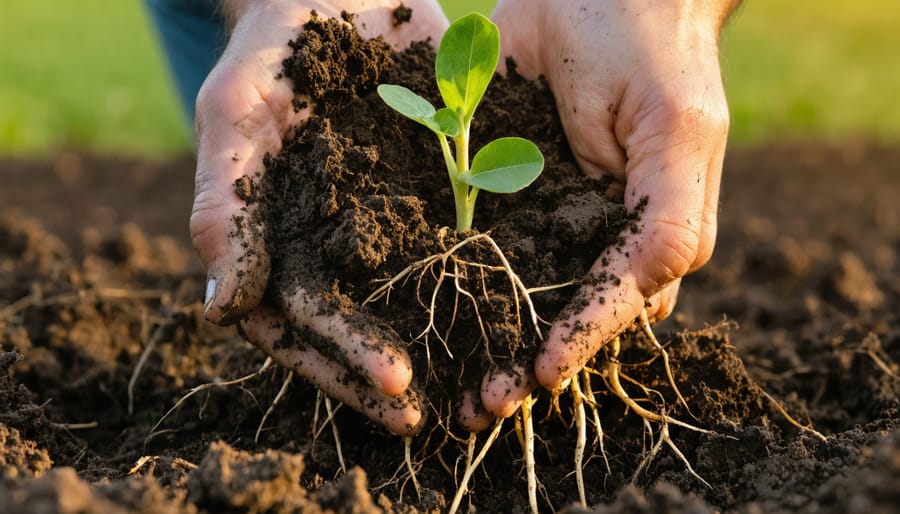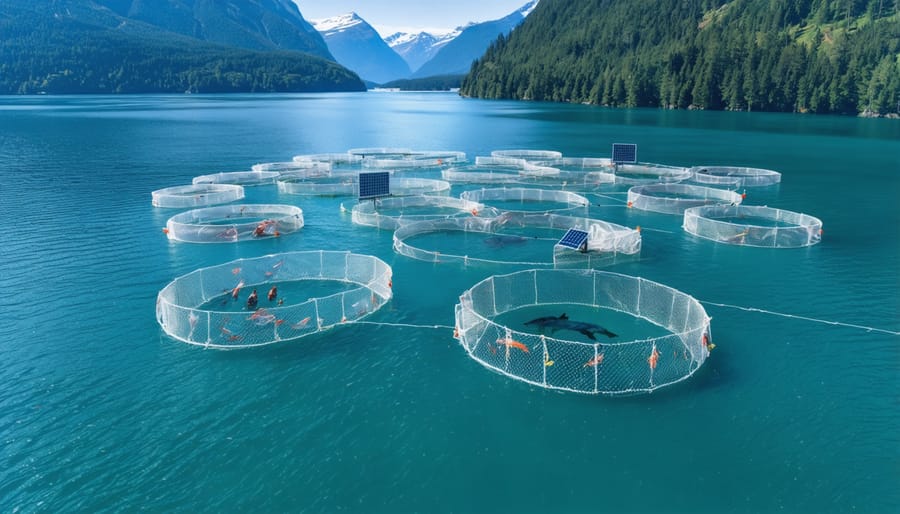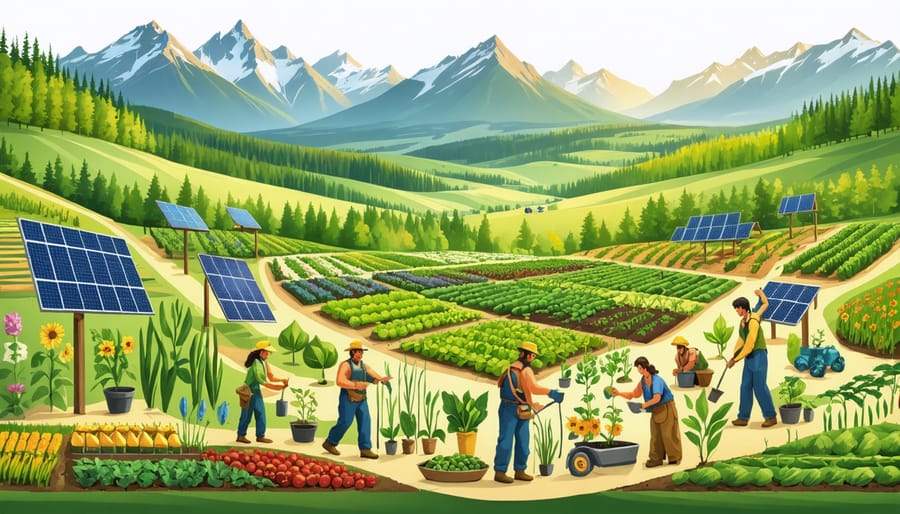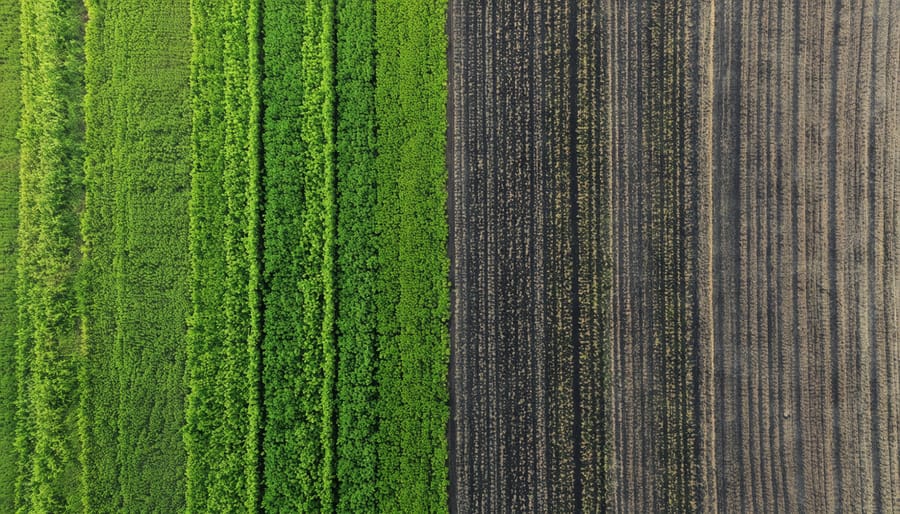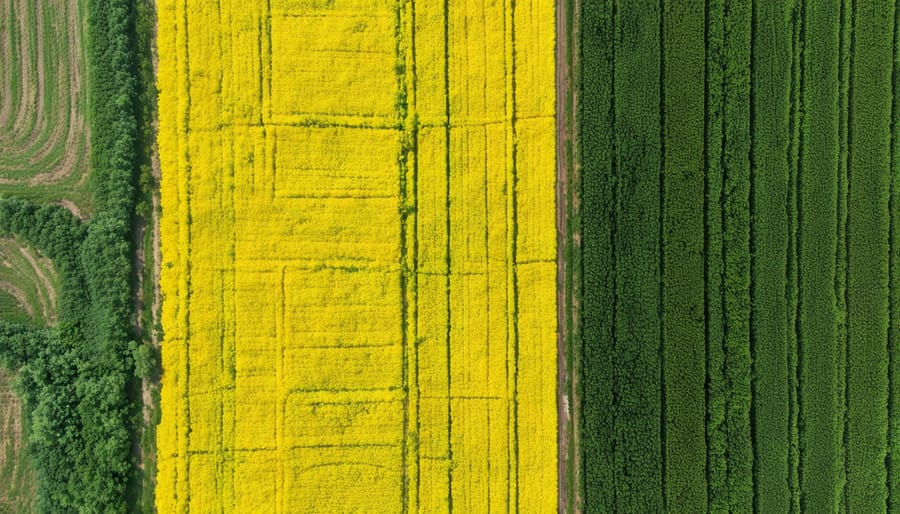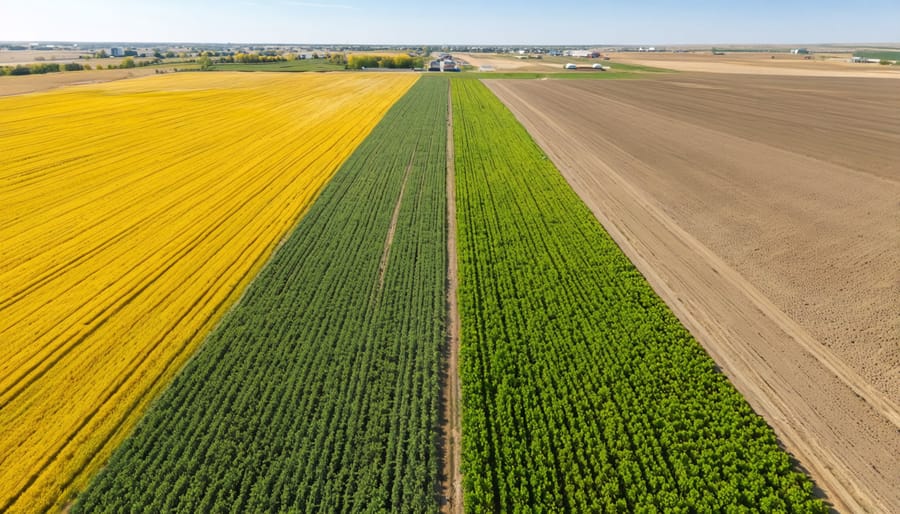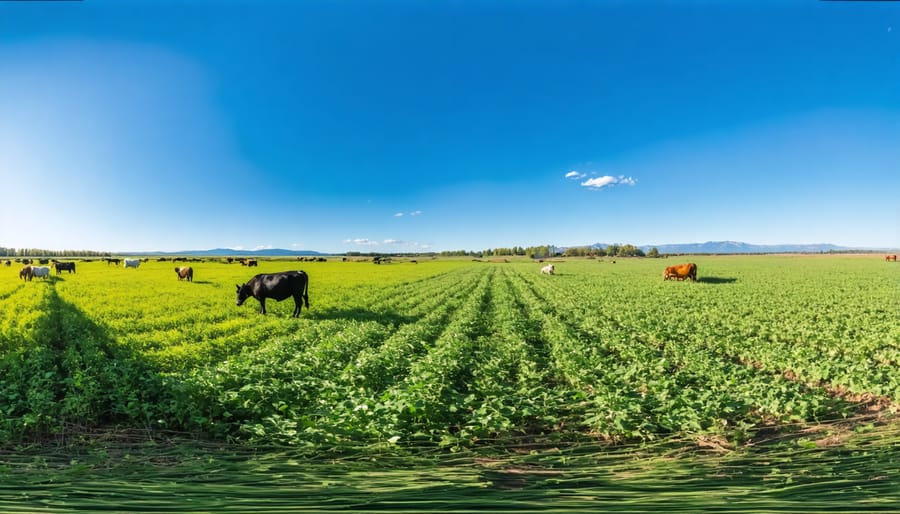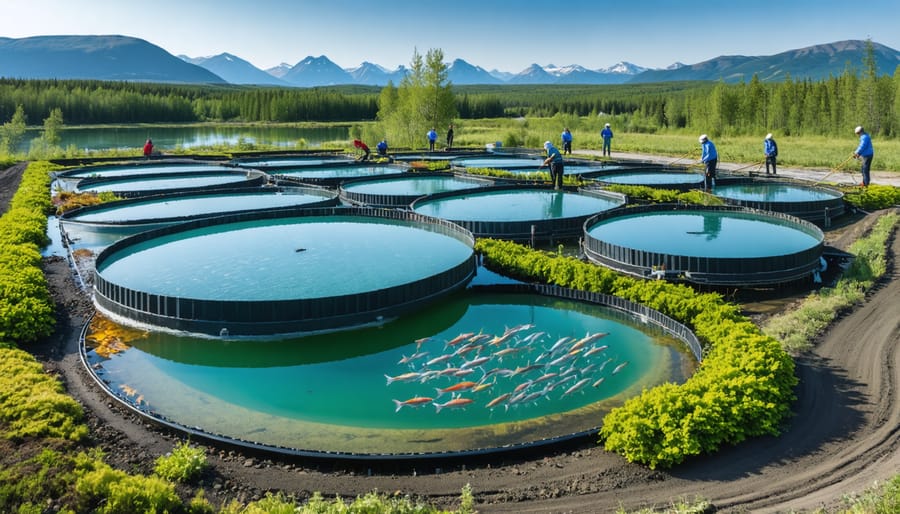Regenerative gardening transforms ordinary backyard plots into thriving ecosystems that rebuild soil health, capture carbon, and boost biodiversity. Unlike conventional gardening methods that deplete resources over time, this holistic approach creates a self-sustaining cycle where each element—from soil microbes to beneficial insects—works together to enhance the garden’s vitality. In Alberta’s challenging climate, regenerative techniques like no-till practices, cover cropping, and composting help gardens flourish while reducing water consumption by up to 30% and eliminating the need for synthetic fertilizers. By mimicking nature’s own cycles, regenerative gardening doesn’t just grow food—it actively restores the land’s natural abundance while producing nutrient-dense crops that thrive in our local conditions. Whether you’re managing a small urban plot or a large acreage, these principles offer a practical path to creating resilient, productive gardens that improve with each passing season.
Beyond Organic: The Power of Regenerative Gardening
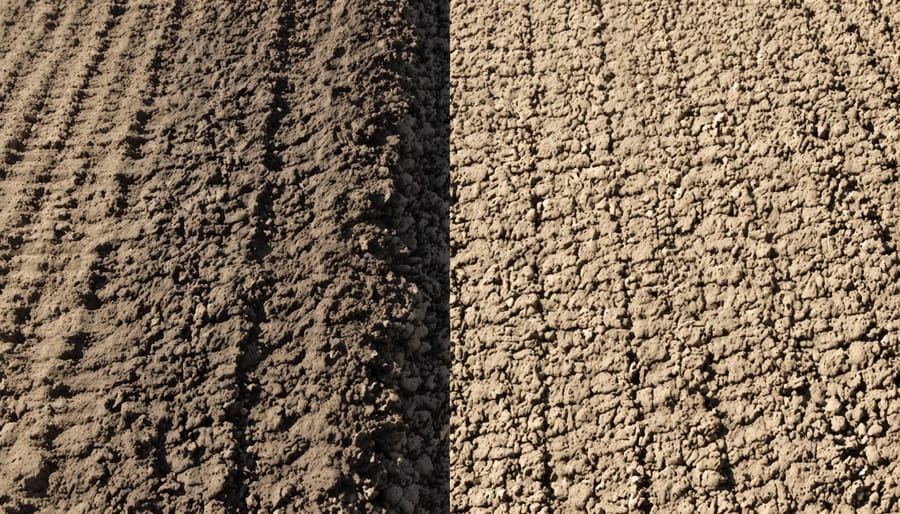
Why Alberta Gardens Need Regenerative Practices
Alberta’s unique climate challenges, including short growing seasons, extreme temperature fluctuations, and often-depleted prairie soils, make regenerative gardening practices particularly valuable for local growers. Our province’s agricultural heritage, combined with modern zero-waste farming practices, creates an opportunity to rebuild soil health while adapting to changing climate patterns.
Our region’s clay-heavy soils benefit significantly from regenerative techniques like cover cropping and minimal tillage, which improve soil structure and water retention. These practices are especially crucial during our hot, dry summers when water conservation becomes paramount. Additionally, building organic matter through composting and mulching helps protect plant roots from our harsh winter temperatures and spring frost events.
Regenerative gardening also addresses common regional challenges like soil erosion from strong prairie winds and the loss of beneficial microorganisms due to conventional farming practices. By implementing these methods, Alberta gardeners can create resilient growing spaces that not only produce abundant harvests but also contribute to the long-term health of our unique prairie ecosystem.
Core Principles of Regenerative Gardening
No-Till Techniques for Canadian Soils
In Canada’s challenging climate, no-till techniques require careful adaptation but offer remarkable benefits for soil health and garden productivity. Instead of traditional tilling, which can expose precious topsoil to erosion during spring thaws and heavy rains, Canadian gardeners can protect their soil by leaving it undisturbed and adding organic matter on top.
For Alberta’s clay-heavy soils, start by laying down a thick layer of cardboard or newspaper in fall, followed by 5-8 cm of compost and mulch. This covering naturally breaks down over winter, while protecting beneficial soil organisms from extreme temperatures. Come spring, plant directly into this enriched layer using minimal soil disturbance.
Canadian gardeners can maintain their no-till systems by applying fresh layers of compost and mulch between growing seasons. Use locally available materials like straw, leaves, or pine needles. In colder regions, consider adding a winter cover crop like fall rye, which helps prevent soil compaction from snow and ice while adding organic matter.
Success stories from Prairie farmers show that no-till methods significantly reduce water needs and extend the growing season by creating warmer spring soil temperatures beneath the protective mulch layer.
Cover Cropping Through the Seasons
In Alberta’s climate, effective cover cropping requires careful seasonal planning. Spring presents an ideal time to plant quick-growing covers like field peas and oats, which can be worked into the soil before your main growing season. These early-season crops help prevent soil erosion during spring rains while adding valuable nitrogen to your soil.
Summer cover crops focus on soil protection and building organic matter. Consider heat-tolerant options like buckwheat and cowpeas, which thrive in our warm summer months while suppressing weeds and attracting beneficial insects. For areas between rows or after early harvest, white clover serves as an excellent living mulch.
Fall cover cropping is crucial for winter soil protection. Cold-hardy varieties like fall rye and winter wheat can be planted in late August or early September, providing essential soil coverage through our harsh Alberta winters. These crops will continue growing in early spring, offering erosion control during snowmelt.
For winter, allow your fall-planted covers to remain standing. The plant residue traps snow, insulates soil, and provides crucial protection against winter winds. This approach aligns perfectly with our region’s natural cycles while building soil health year-round.

Building Living Soil Systems
Building a thriving soil ecosystem is at the heart of regenerative gardening. In Alberta’s varied climate, fostering beneficial microorganisms requires a thoughtful approach that works with nature rather than against it. The key is creating an environment where soil life can flourish naturally.
Start by minimizing soil disturbance and maintaining constant soil coverage through mulching with organic materials like straw or leaves. This provides habitat for beneficial organisms and helps regulate soil temperature and moisture levels, particularly important during our harsh prairie winters.
Adding diverse organic matter through composting and green manures feeds soil microorganisms and encourages their proliferation. Local farmers have found success using a mix of legumes and cereal crops as green manures, which add both nitrogen and carbon to the soil system.
Regular applications of compost tea or vermicompost can introduce beneficial bacteria and fungi to your soil. Many Alberta gardeners maintain their own vermicomposting systems year-round, ensuring a steady supply of rich, living compost even during the cold season.
Remember that healthy soil systems take time to develop. Focus on consistent, gentle practices that support life below ground, and the results will show above ground.
Water Conservation Strategies
In Alberta’s varied climate, smart water management is crucial for regenerative garden success. The key lies in creating systems that maximize water efficiency while building soil health. Start by implementing deep mulching with organic materials like straw or wood chips, which can reduce water evaporation by up to 70% and keep soil temperatures stable.
Capture and store rainwater using rain barrels or underground cisterns – a practice many Alberta farmers have successfully adopted to offset irrigation needs during dry spells. Install drip irrigation systems, which deliver water directly to plant roots, reducing waste and preventing soil erosion. These systems are particularly effective when combined with moisture-retaining soil amendments like compost and biochar.
Consider contour gardening and swales to naturally direct and retain water flow across your land. These landscape features, when properly designed, can significantly reduce irrigation needs while preventing runoff. Time your watering sessions for early morning or late evening to minimize evaporation losses, and group plants with similar water needs together to create efficient irrigation zones.
Remember to regularly monitor soil moisture levels using simple tools like moisture meters or the traditional finger test to avoid over or under-watering.
Success Story: The Thompson Family Farm
Located just outside of Leduc, Alberta, the Thompson Family Farm stands as one of the region’s most inspiring successful regenerative transformations. Sarah and Mike Thompson, third-generation farmers, made the bold decision in 2018 to transition their 160-hectare conventional farm into a regenerative operation.
“We were watching our soil health decline year after year,” Sarah explains. “The increasing costs of synthetic inputs and the visible erosion in our fields told us something needed to change.”
The Thompsons began by implementing cover cropping and reducing tillage across their operation. They introduced a diverse rotation of crops including heritage wheat varieties, lentils, and native prairie grasses. Within two years, they noticed significant improvements in soil structure and water retention.
A key component of their success was the integration of livestock. They introduced a small herd of heritage cattle that rotates through their pastures, naturally fertilizing the soil and controlling weed growth. The family also established pollinator-friendly corridors throughout their property, supporting local biodiversity and improving crop yields.
The results have been remarkable. Soil organic matter increased from 2% to 4.5% in just three years, and water infiltration rates improved by 60%. The farm now requires 70% less synthetic inputs, significantly reducing operational costs.
“What surprised us most was how quickly the ecosystem responded,” Mike shares. “We’re seeing birds and beneficial insects we haven’t spotted in decades, and our vegetables taste better than ever.”
The Thompsons now host regular field days, sharing their experiences with other Alberta farmers interested in regenerative practices. Their journey demonstrates that transitioning to regenerative methods isn’t just environmentally sound – it’s economically viable in the Canadian prairies.
Their story has inspired numerous local farmers to explore regenerative practices, proving that sustainable agriculture can thrive in Alberta’s unique climate while maintaining profitability and building resilience for future generations.

Starting Your Regenerative Garden
First Steps for New Gardens
Converting your existing garden into a regenerative space doesn’t require a complete overhaul. Start by assessing your soil’s health through basic testing, which can be done through local agricultural extension services or home testing kits. Next, implement a “no-till” approach by leaving the soil structure intact and adding organic matter on top, rather than digging or rototilling.
Begin building soil health by applying a layer of compost and mulch. In Alberta’s climate, aim for a 5-10 cm layer of organic mulch to protect soil from extreme temperature fluctuations. Local materials like straw, leaves, or wood chips work well and support regional resource cycling.
Create diverse planting areas by incorporating different plant heights and types. Consider including native Alberta species like yarrow, wild bergamot, and golden bean, which naturally support local ecosystems. This approach is particularly valuable in urban food production settings where space optimization is crucial.
Start small by converting one section of your garden at a time. Document your progress through photos and soil observations. Many successful regenerative gardeners in Alberta recommend beginning with a 3×3 metre test plot to learn and adjust practices before expanding.
Remember to maintain living roots in the soil as much as possible by using cover crops during shoulder seasons. Winter rye and field peas are excellent choices for our climate and can be planted as soon as your main crops are harvested.
Seasonal Planning Guide
Success in regenerative gardening requires thoughtful planning across all seasons. In Alberta’s distinct climate, understanding the natural cycles and preparing accordingly is crucial for maintaining a thriving garden ecosystem throughout the year.
Spring brings the awakening of soil life. Start by assessing your soil’s health through visual inspection and simple soil tests. As temperatures warm, introduce early-season cover crops like field peas or oats to protect and nourish the soil. This is also the ideal time to establish new perennial plantings and prepare your composting system.
Summer focuses on maintaining soil moisture and managing plant diversity. Implement mulching strategies using locally available materials like straw or leaves. Practice companion planting, combining plants that support each other’s growth while maximizing space efficiency. Monitor beneficial insect populations and maintain flowering plants to support pollinators.
Fall is harvest time but also crucial for winter preparation. Plant cold-hardy cover crops like winter rye or hairy vetch to protect soil through winter. Collect fallen leaves and organic matter for composting and soil coverage. Consider establishing windbreaks or shelter belts to protect your garden from harsh winter winds.
Winter isn’t downtime – it’s planning season. Review your garden’s performance, order seeds, and design next year’s planting schedule. Focus on indoor activities like vermicomposting and attending local gardening workshops to expand your knowledge and connect with other regenerative gardeners in your community.
Remember, successful regenerative gardening is about working with nature’s rhythm, not against it. Adjust these seasonal activities based on your specific microclimate and local conditions.
Regenerative gardening represents a powerful shift in how we approach agriculture in Canada, offering a sustainable path forward that benefits both our land and communities. Through the practices we’ve explored – from building healthy soil ecosystems to implementing water conservation techniques – we can create resilient gardens that produce abundant harvests while regenerating our environment.
As Alberta farmers and gardeners, we’re uniquely positioned to lead this agricultural evolution. Our diverse landscape and strong farming heritage provide the perfect foundation for implementing these regenerative principles. The success stories we’ve shared from local farmers demonstrate that these methods aren’t just theoretical – they’re providing real results in our own backyard.
Remember, transitioning to regenerative practices doesn’t have to happen overnight. Start small by incorporating one or two techniques, such as adding cover crops or reducing tillage. As you gain confidence and see results, gradually expand your regenerative practices. Connect with local farming organizations and fellow gardeners who are on similar journeys – the strength of our agricultural community lies in sharing knowledge and supporting one another.
By embracing regenerative gardening, we’re not just growing food; we’re nurturing healthier ecosystems, building climate resilience, and creating a more sustainable future for Canadian agriculture. Take that first step today – your garden, and our shared environment, will thank you for it.


